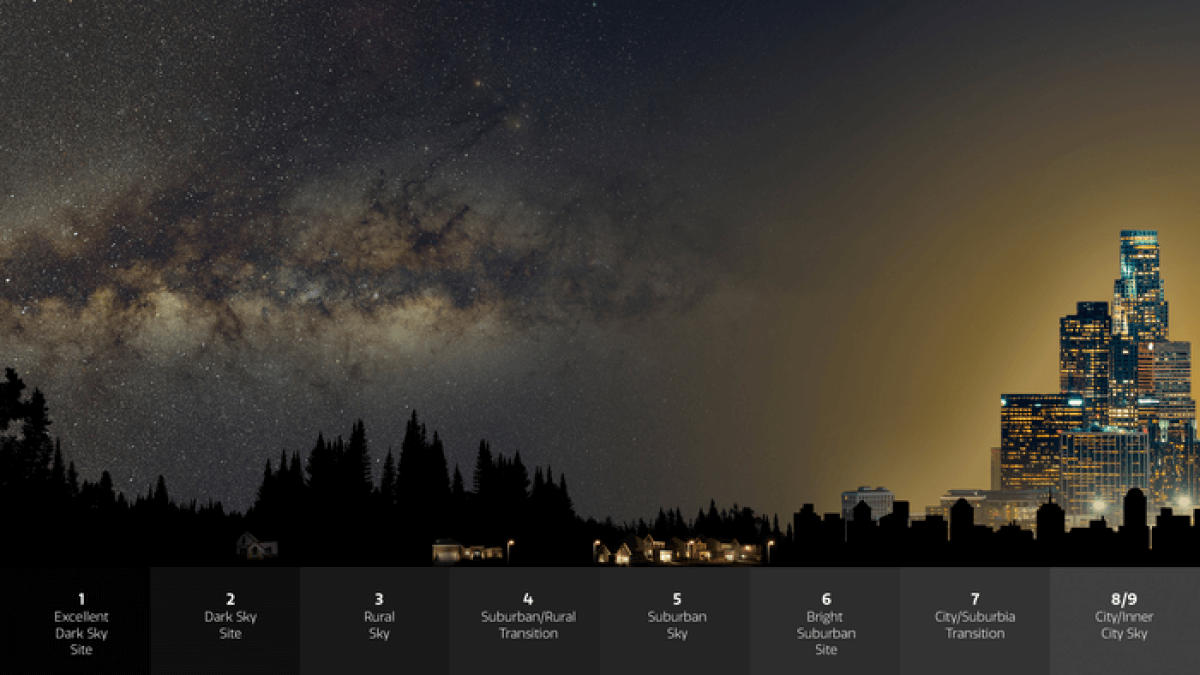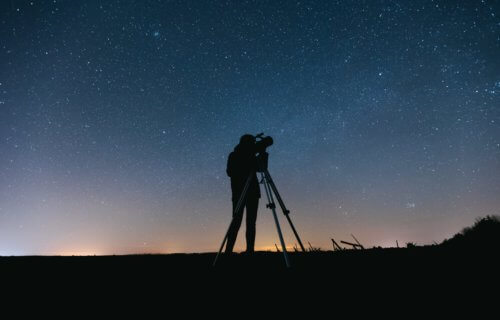Alarming report says Earth’s surface is getting brighter, leaving people in big cities with very little to see in the skies at night
POTSDAM, Germany — Stars in the night sky are vanishing due to light pollution, according to stargazers around the world. These citizen scientists say Earth’s surface is rapidly getting brighter, eroding star visibility. For those living in major cities like New York, it can be nearly impossible to see the countless stars which cover the sky each night.
The findings are based on observations from citizen astronomers worldwide over the past 12 years. They reveal a worrisome trend – most people on earth can no longer see the shimmering Milky Way without a telescope. In big cities, people are lucky to even glimpse the Big Dipper now.
Study authors from the GFZ German Research Centre for Geosciences say the change in visibility is equivalent to around a 10-percent annual increase in luminosity — faster than satellites have previously indicated. The growth of light pollution is occurring despite policies which cut down on streetlamps, billboards, neon signs, and car headlights usage.
To put this problem in perspective, lead author Dr. Christopher Kyba says estimates that a child born in an area where 250 stars were visible would likely see fewer than 100 in the same location 18 years later.
“In many inhabited places on Earth, the night sky never fully grows dark. It instead glows with an artificial twilight caused by the scatter of anthropogenic light in the atmosphere,” researchers write in a media release.

Known as skyglow, the phenomenon is responsible for the visible brightening of the night sky and the erosion of our ability to see stars. Its ubiquity and luminance has increased exponentially over much of the last century.
Light pollution can also be a health problem
Satellites that can measure global skyglow are limited in resolution and sensitivity. They are often blind to the wavelengths produced by modern LED lights that have come to dominate technology over the past decade. So, the international team evaluated 51,351 citizen scientist observations of naked-eye stellar visibility from 2011 through 2022.
They asked participants worldwide to compare star maps at different levels of light pollution to what they could see with their own eyes through the online platform Globe at Night. The study in the journal Science found the night sky has increased in brightness from artificial light by roughly seven to 10 percent per year.
“The contributions of individual people work together as if they were a global sensor network, making new science possible,” says Kyba in a statement.
Estimates show that the Milky Way galaxy is no longer fully visible to one-third of humanity — including 60 percent of Europeans and 80 percent of Americans. Scientists have found excessive artificial lighting at night can have a number of adverse consequences. It disrupts our sleep, messes with wildlife, and is a big waste of energy.
“Skyglow affects both diurnal and nocturnal animals and also destroys an important part of our cultural heritage,” says Constance Walker, co-author of the study and head of the Globe at Night project.
“Perhaps the most important message that the scientific community should glean from the Kyba et al. study is that light pollution is increasing, notwithstanding the countermeasures purportedly put into operation to limit it,” says Fabio Falchi and Salvador Bará in a related release. “Awareness must greatly increase for artificial light at night to be perceived not as an always-positive thing, but as the pollutant it really is.”
South West News Service writer Mark Waghorn contributed to this report.


It would help if the desiccants in jet fuel were completely consumed after combustion. As it is jet fuel exhaust just spreads all over the sky condensing water vapor into persistent clouds.
What dessicants are you referring to?
Windmills for generating electricity are creating light pollution across many horizons in rural areas – persistent, ugly red lights blinking through the night.
Hmmm, I wonder what effect mass immigration from low-energy use nations to highly industrial nations has on the global light problem. Oh wait, the same impact it has on our global warming problem.
Yes,and icebergs are forming in Lake Erie, What a load of bull!
Unfortunately it isn’t a load of anything as even professional astronomers are losing their dark sky affecting science observations.
Check out Westcliffe, Colorado. First “dark skies” town in US. Fabulous views of milky way.
https://www.darkskiescolorado.org/
I live in Las Vegas, NV. I can drive a short 10 – 15 minutes from my house to see a full sky of start including the milky way.
This is nothing that grounding all private jets wouldn’t fix!!!!
There should be a comma after the word “Goodnight” in the headline.
“Light pollution”? Oh, you mean – more people getting access to electricity, and living better lives. OK.
How is upsetting the natural balance of life living better?
We are creating a world where there is no night.
Animals and people are adversely affected.
My 95 year old dad told me early 60’s there were not many outside lights at night. Sky was crisp and clear.
He said after 1964 civil rights rallies, more lights were on at night to combat crime. And this keeps increasing to this day. More crime-=More lights
It seems we have street lights everywhere on roads with little traffic.
Large multi thousand space parking lots that are empty at night
I drive about 100 miles from home to see the Milky Way. In the last 20 years or so the sky has been getting brighter with less stars visible. Large areas of farmland now are housing or business use with lighted areas 24/7. Its sad.
Getting difficult to get a good night picture also. Bad enough light pollution but airplane trails and increased satellite activity mess up the view also.
People in big cities can’t see the night sky as much, eh?
Gee…I wonder why.
These “studies” are silly.
The lights are brightest in the first world. the solution is for everyone to move underground